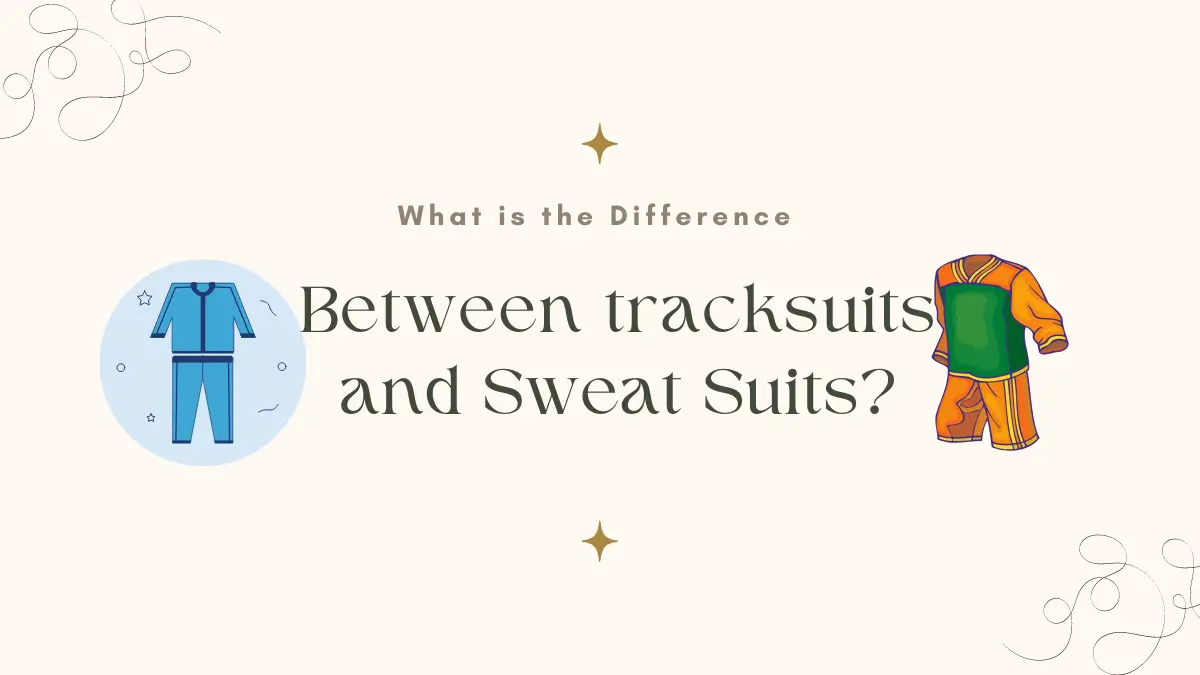Introduction of Tracksuit vs Sweatsuit
When it comes to casual and athletic wear, tracksuits and sweatsuits are two of the most popular options. While many people use the terms interchangeably, they are not the same. Each has its own distinct features, fabric composition, and functional benefits.
Understanding the differences between a tracksuit and a sweatsuit is essential for making the right choice based on your needs, whether it’s for workouts, lounging, or running errands. This guide will help you distinguish between the two by breaking down their materials, designs, uses, pricing, and more.
Fabric and Material Tracksuit vs Sweatsuit
A. Tracksuit Fabric and Characteristics
Tracksuits are designed primarily for athletic purposes, which means they are made from lightweight, breathable, and moisture-wicking fabrics. Common materials include:
- Polyester: Provides durability and moisture resistance
- Nylon: Lightweight and quick-drying
- Spandex blends: Offers stretch and flexibility
Most tracksuits have a smooth and sleek outer layer to reduce wind resistance, making them ideal for sports and training.
B. Sweatsuit Fabric and Characteristics
Sweatsuits, on the other hand, prioritize comfort and warmth. They are commonly made from:
- Cotton fleece: Soft, warm, and highly breathable
- French terry: Lighter than fleece but still cozy
- Cotton-polyester blends: Provides both warmth and durability
Sweatsuits generally have a softer, more textured surface and a brushed interior that enhances insulation, making them perfect for lounging or cooler weather.
C. Comparison of Materials Used in Tracksuits and Sweatsuits
| Feature | Tracksuits | Sweatsuits |
|---|---|---|
| Material | Polyester, nylon, spandex | Cotton, fleece, terry |
| Texture | Smooth and sleek | Soft and plush |
| Functionality | Moisture-wicking, breathable | Warm, cozy, absorbent |
| Best For | Athletic activities | Relaxation and casual wear |
Design and Style
A. Features of a Tracksuit Design
Tracksuits typically consist of a zip-up jacket and matching pants. The key design features include:
- Slim or fitted cut for enhanced movement
- Elastic or zippered cuffs to reduce wind drag
- Mesh or ventilated panels for breathability
Tracksuits often have a sporty and stylish look, making them versatile for both workouts and casual outings.
B. Features of a Sweatsuit Design
Sweatsuits are more relaxed and cozy, featuring:
- Pullover or zip-up sweatshirts with a looser fit
- Drawstring waistbands for comfort and adjustability
- Elastic cuffs and hems to retain warmth
Sweatsuits are designed to keep the wearer warm while allowing free movement, making them perfect for lounging or light activities.
C. How the Design of Each Type Contributes to Its Functionality
Tracksuits are engineered for performance, focusing on breathability, flexibility, and aerodynamics, while sweatsuits prioritize warmth and comfort, making them ideal for leisure.
Usage and Occasions
A. When to Wear a Tracksuit
Tracksuits are best suited for:
- Workouts and sports training (running, gym sessions, warm-ups)
- Outdoor activities (jogging, cycling, hiking)
- Casual streetwear (trendy and fashionable options)
B. When to Wear a Sweatsuit
Sweatsuits are ideal for:
- Relaxing at home (lounging, watching TV, reading)
- Casual outings (running errands, traveling)
- Colder weather (layering up during fall or winter)
C. Different Occasions for Each Type of Outfit
While both tracksuits and sweatsuits offer casual comfort, tracksuits are better for active lifestyles, whereas sweatsuits provide warmth and relaxation.
Price and Quality
A. Factors Influencing the Price of Tracksuits and Sweatsuits
Several factors determine the cost of these outfits, including:
- Material quality (premium fabrics cost more)
- Brand reputation (designer brands command higher prices)
- Added features (moisture-wicking tech, stretch panels)
B. Quality Comparison Between Tracksuits and Sweatsuits
Tracksuits often incorporate advanced materials like water-resistant coatings or ventilation panels, making them pricier than basic sweatsuits. However, high-end sweatsuits made from luxury cotton blends can be equally expensive.
C. Tips for Choosing the Right Tracksuit or Sweatsuit Based on Price and Quality
- For sports, invest in a high-quality tracksuit with moisture-wicking properties.
- For comfort, opt for a soft, well-stitched sweatsuit with durable fabric.
- Consider budget-friendly options without sacrificing material quality.
Conclusion
In summary, while tracksuits and sweatsuits may appear similar, their differences lie in fabric, design, usage, and price. Tracksuits are lightweight, breathable, and ideal for sports, while sweatsuits are cozy, warm, and perfect for casual wear.
By understanding these distinctions, you can make a better choice based on your lifestyle needs—whether you’re looking for something to enhance your athletic performance or to keep you comfortable on lazy days.
FAQs of Tracksuit vs Sweatsuit
1. What is the main difference between a tracksuit and a sweatsuit?
A tracksuit is designed for athletic performance, made from synthetic, moisture-wicking fabrics. A sweatsuit is made for warmth and comfort, typically from cotton fleece or terry.
2. Can tracksuits and sweatsuits be used interchangeably?
Not always. While both offer comfort, tracksuits are better for workouts, while sweatsuits are more suited for casual lounging.
3. Are tracksuits and sweatsuits suitable for all body types?
Yes! Both are available in various fits and sizes, making them accessible for all body types. Tracksuits often have a more fitted look, while sweatsuits tend to be looser and more relaxed.

